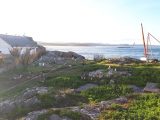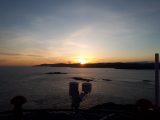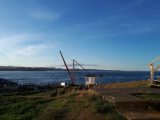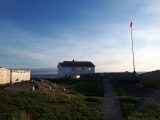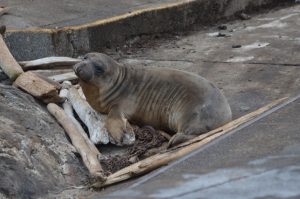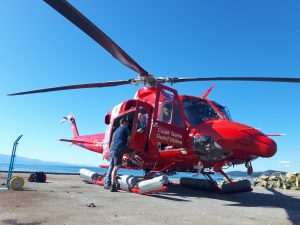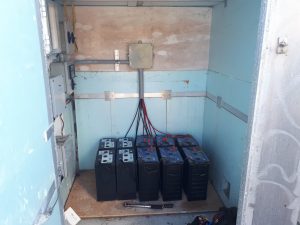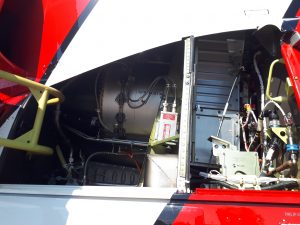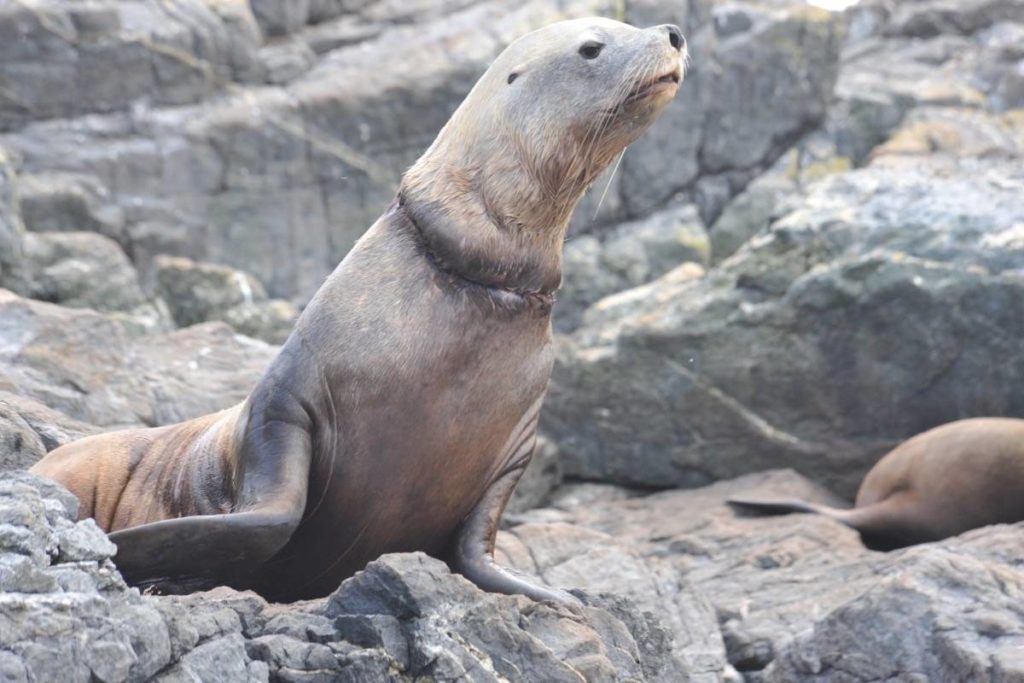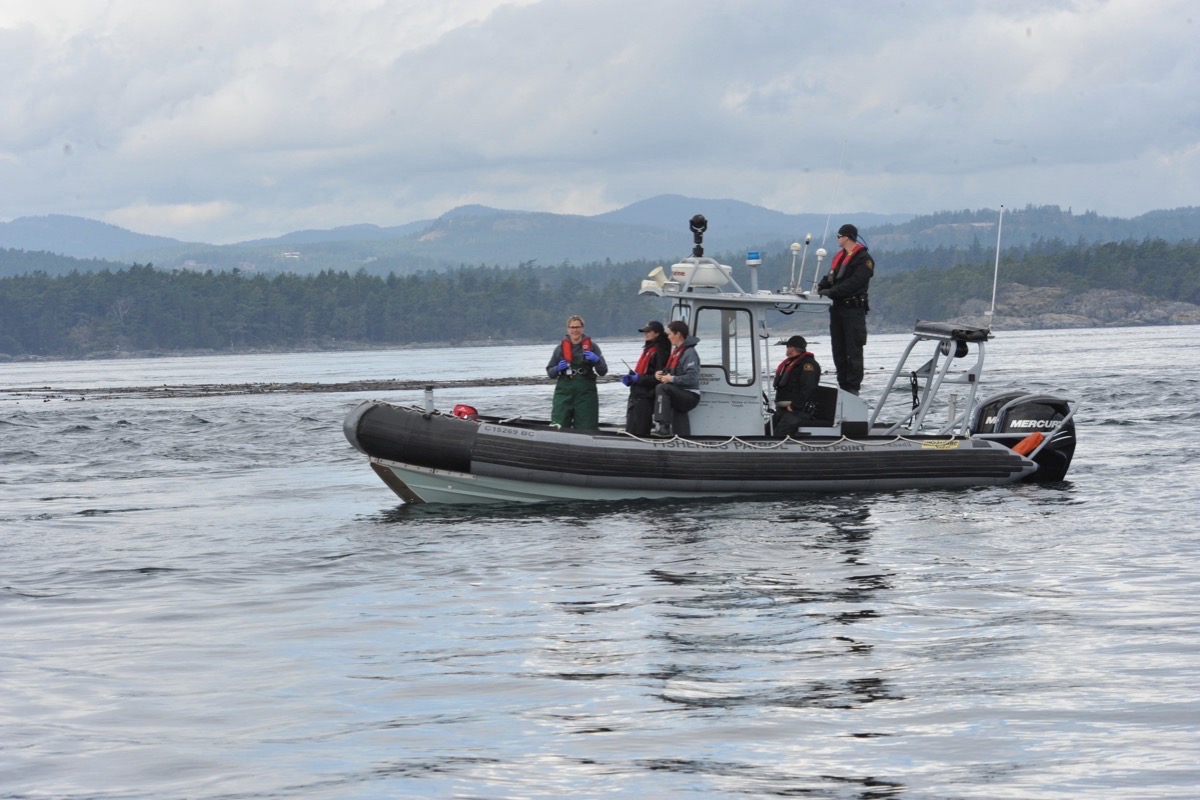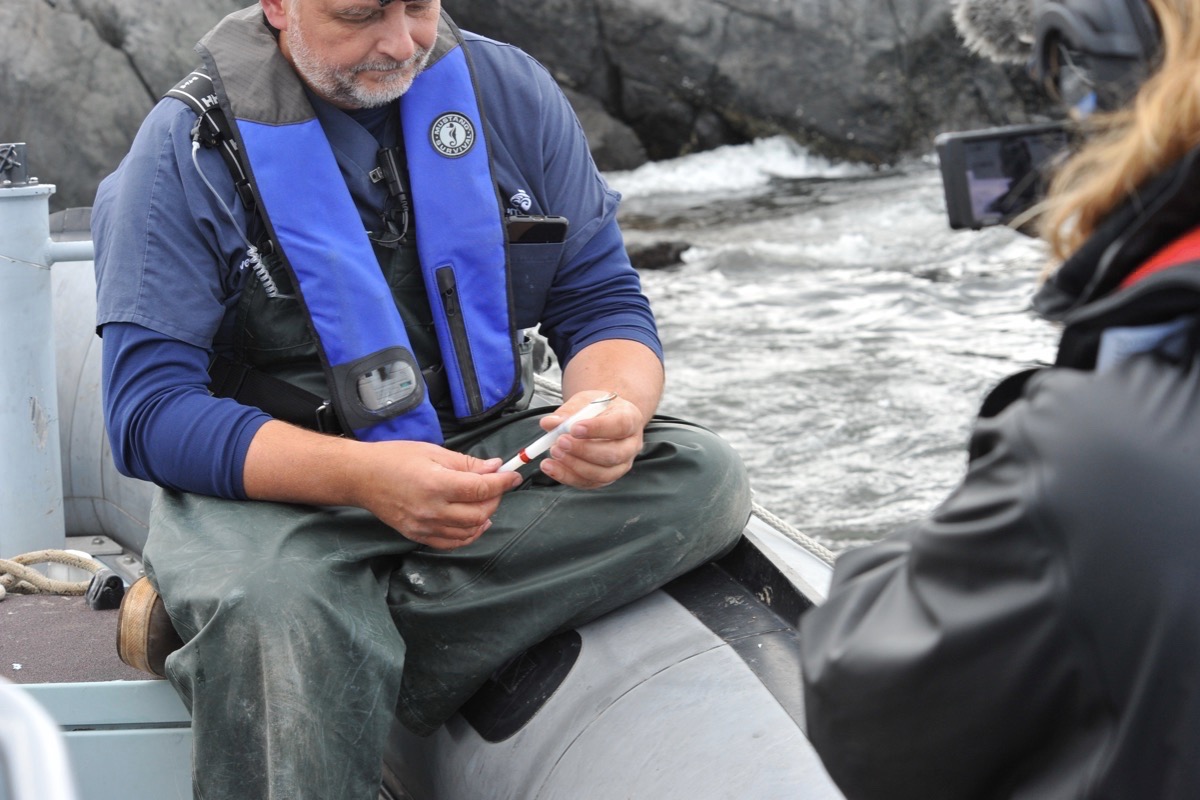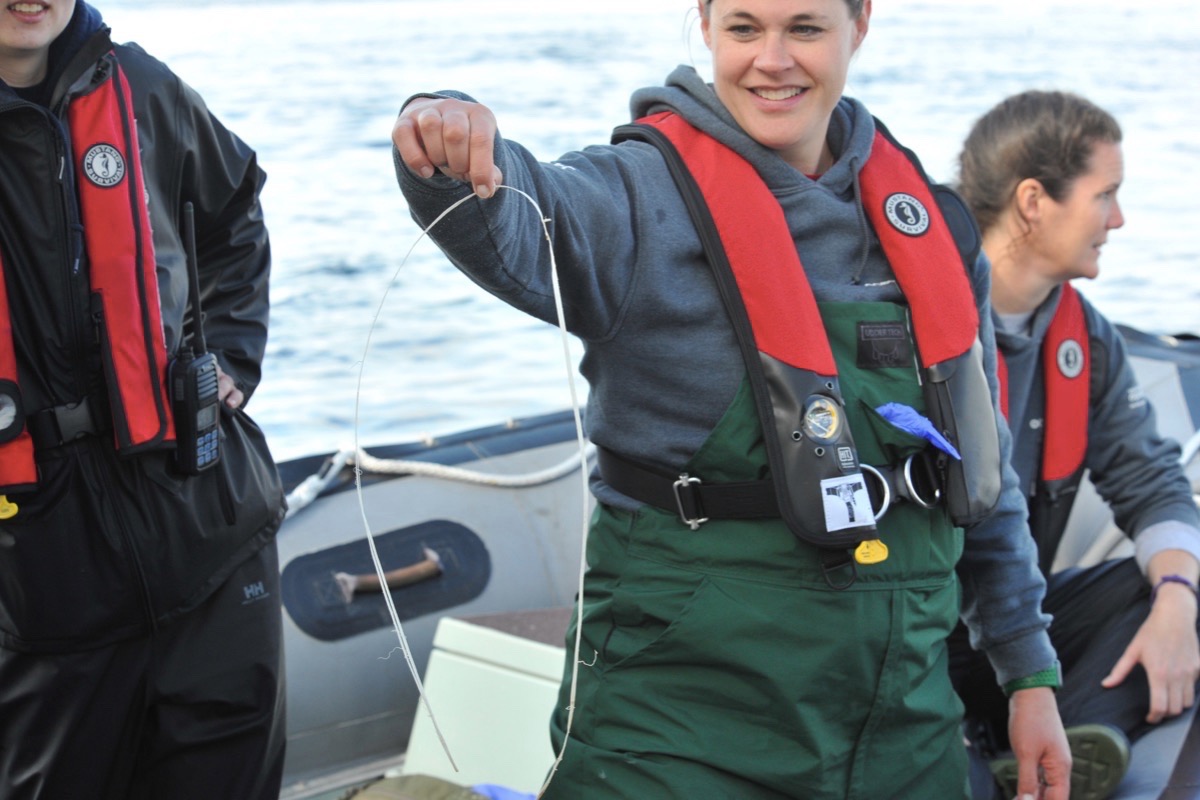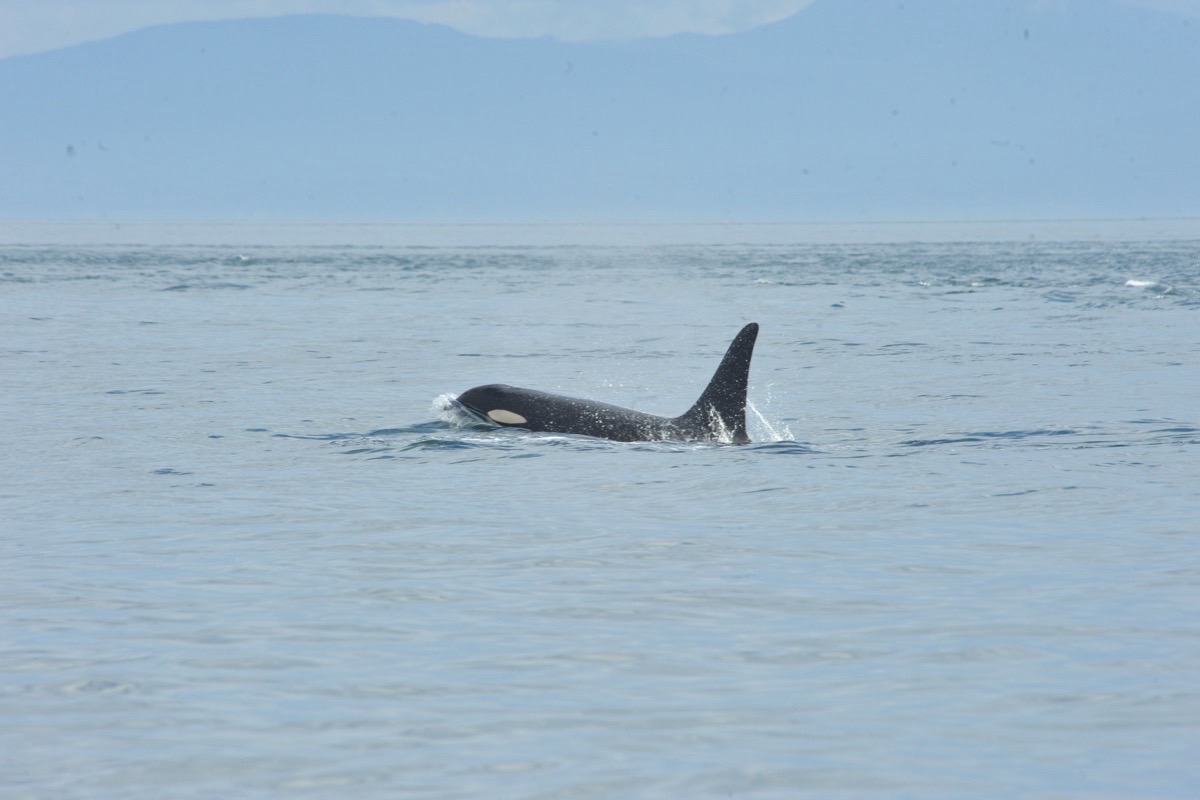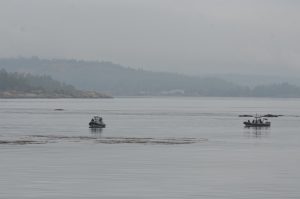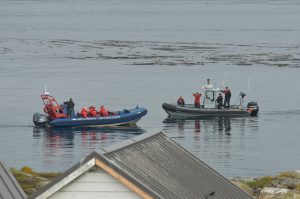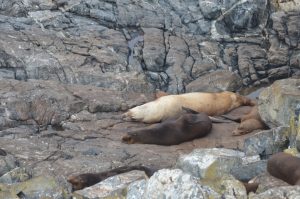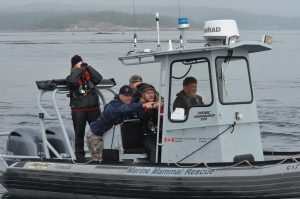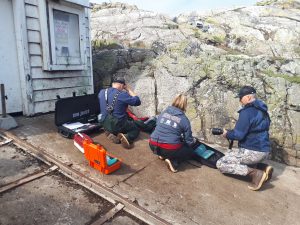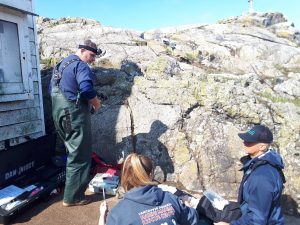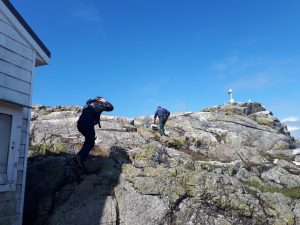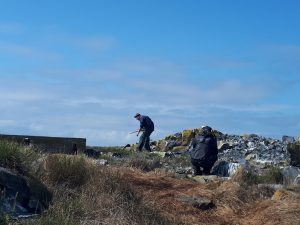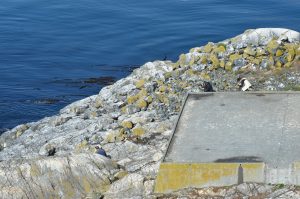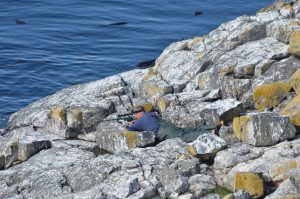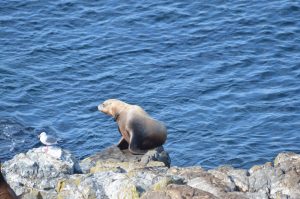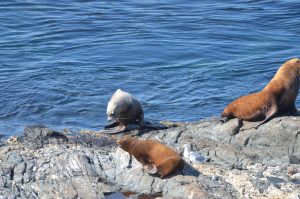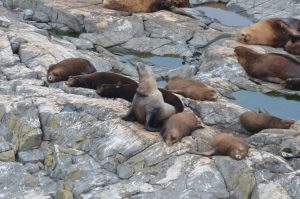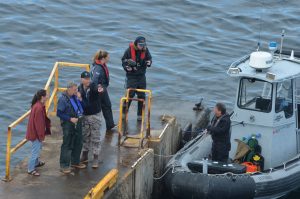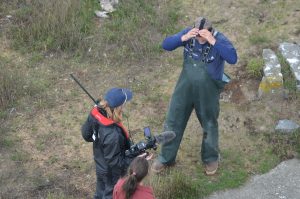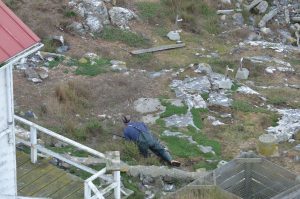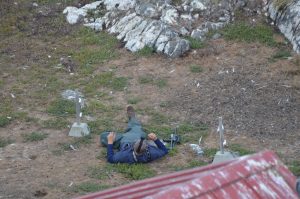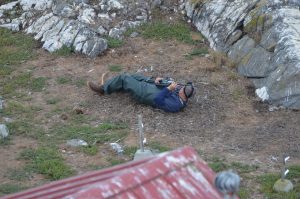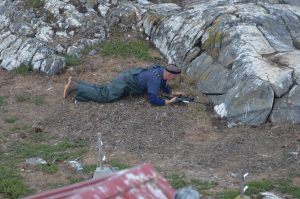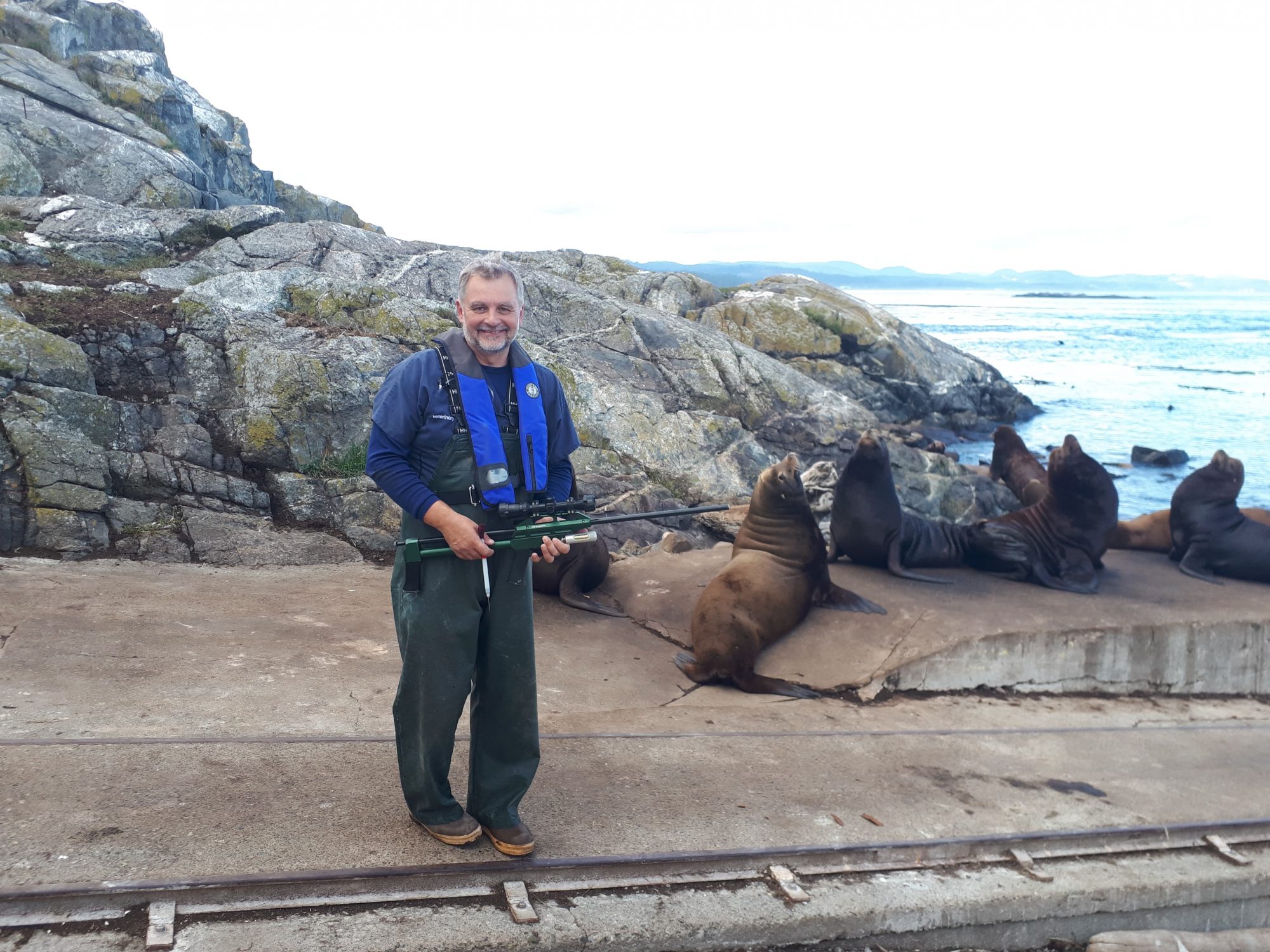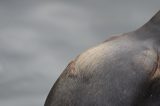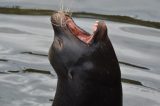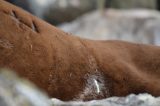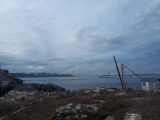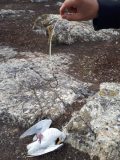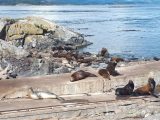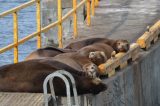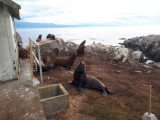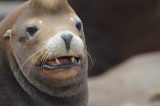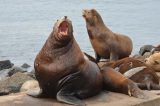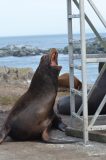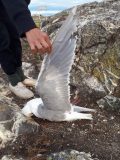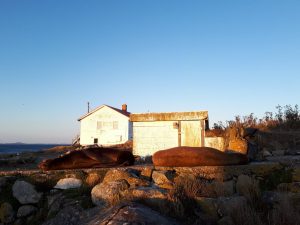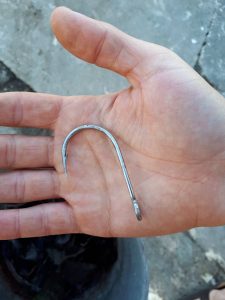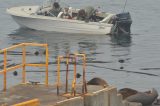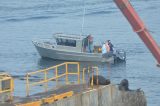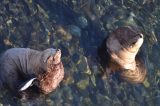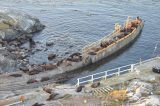From The Goldstream Gazette 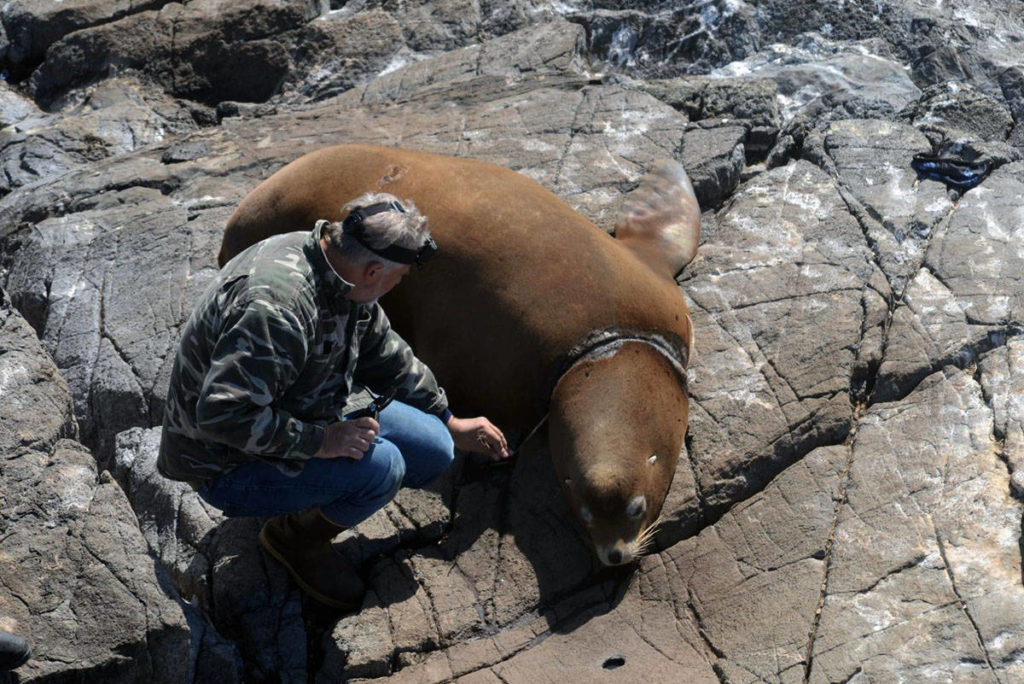 A Marine Mammal Rescue Centre veterinarian removes a plastic packing band from the neck of a Stellar’s sea lion at the Race Rocks Ecological Reserve on Sept. 10. (Courtesy of Mara Radawetz)
A Marine Mammal Rescue Centre veterinarian removes a plastic packing band from the neck of a Stellar’s sea lion at the Race Rocks Ecological Reserve on Sept. 10. (Courtesy of Mara Radawetz)
Plastic band removed from neck of Greater Victoria sea lion
Entanglement injuries in seals and sea lions a regular occurrence at Race Rocks Ecological Reserve
A sea lion trapped in human garbage has a second chance at life thanks to the sharp eye of a lighthouse-dwelling ‘ecoguardian’ at Race Rocks Ecological Reserve near Metchosin.
Mara Radawetz and Kai Westby, who live in the island’s lighthouse tower and monitor the reserve on behalf of Pearson College, called in back-up support when Radawetz spotted a California sea lion with a plastic packing band tightly bound around its neck on Sept. 1.
Over the days that followed, the duo spotted the animal again and watched it expressing clear discomfort as a result of the appendage.
“We could see that it was suffering, he would continually scratch at the infected area on his neck,” Westby said. “It had cut through his skin and created a kind of swollen, wet wound.”
The Marine Mammal Rescue Centre (MMRC), assisted by the Department of Fisheries and Oceans, responded to the call for help, but it would be a few days before the rescue could arrive by boat.
Fortunately, the rescue team arrived Sept. 10 and Radawetz was able to again spot the injured sea lion using a high-powered magnification lens from the top of the lighthouse, where the duo does a daily count of the island’s furry, feathered and blubbery visitors, which typically number in the thousands.
READ ALSO: Sooke Whale Watching spots a huge gathering of whales
“Being able to have that eye in the sky was instrumental in being able to successfully help this animal,” Westby said.
With a bird’s eye view, the pair guided MMRC veterinarian Martin Haulena to an area where he could prepare a dart gun with a tranquillizer. Rescue staff aided from the water and land, watching as Haulena crawled over the rocks and got into position, successfully tranquillizing the sea lion.
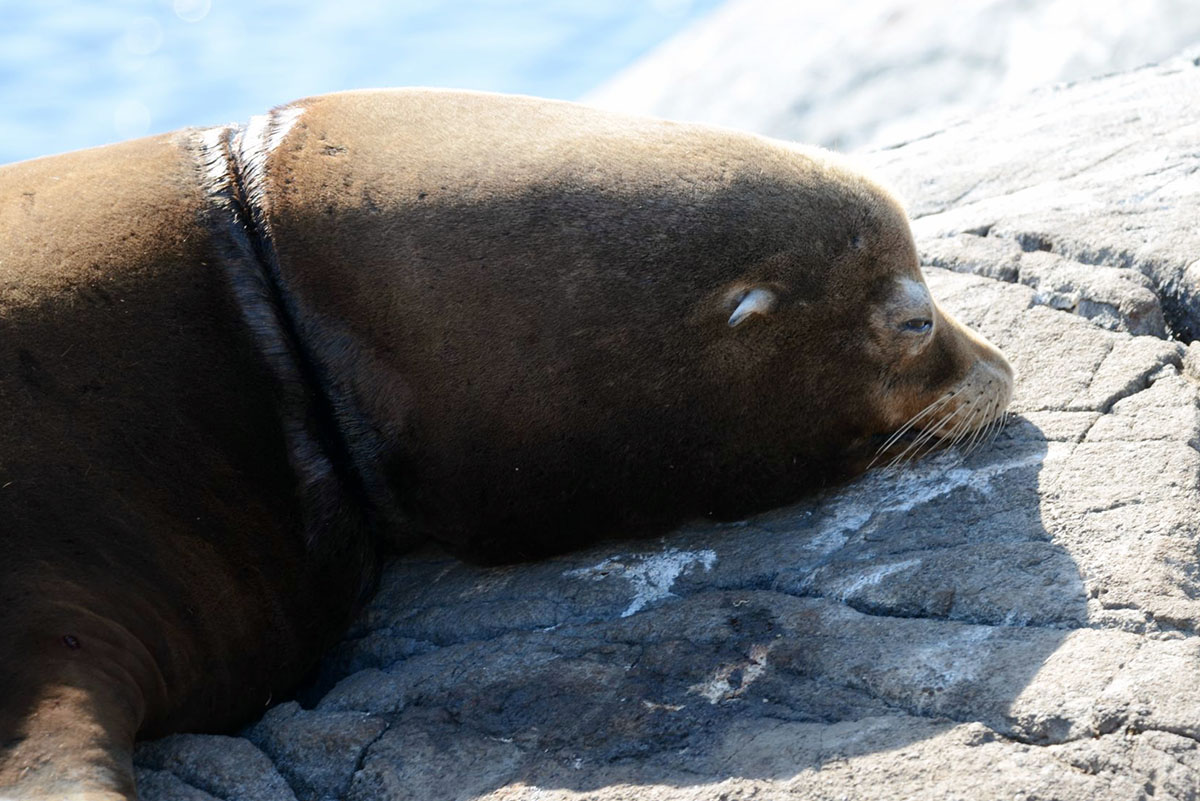 A sea lion that had a plastic band removed from its neck at the Race Rocks Ecological Reserve wakes up from sedation.(Courtesy of Mara Radawetz)
A sea lion that had a plastic band removed from its neck at the Race Rocks Ecological Reserve wakes up from sedation.(Courtesy of Mara Radawetz)
In addition to removing the plastic band, the vet installed a tracking device and took a blood sample.
Radawetz and Westby said they see a sea lion or harbour seal with an injury due to human impact roughly once a week – and many of those animals don’t have a happy ending.
“We often see not only plastic entanglements but fishing line injuries on the sea lions and the harbour seals,” Radwetz said. The pair said they often see pinnipeds – seals, sea lions and walruses – that have swallowed a fish still on a fishing line, a meal that can cost the animal its life.
“It’s not always possible for us to help them,” Radawetz said.
While one lucky sea lion was able to swim free, Westby and Radawetz hope the incident resonates with people.
Westby added, “I really hope by sharing some of what we see here we can remind people that their actions have impacts and we are seeing those impacts here in Race Rock.”
In September 2019, a sea lion with almost identical injuries was rescued at the Race Rock Ecological Reserve. That animal had a plastic band embedded roughly two inches into its neck.
For more news from Vancouver Island and beyond delivered daily into your inbox, please click here.
READ ALSO: Steller sea lion with plastic around neck rescued on Vancouver Island
